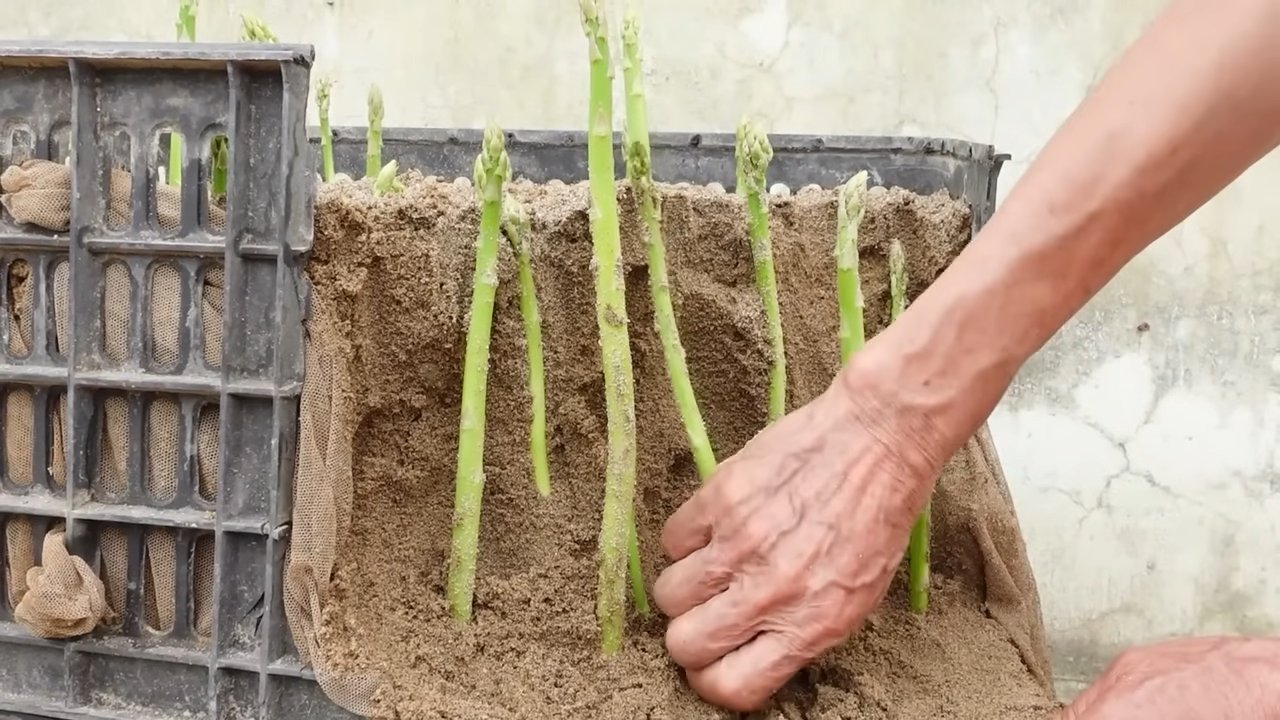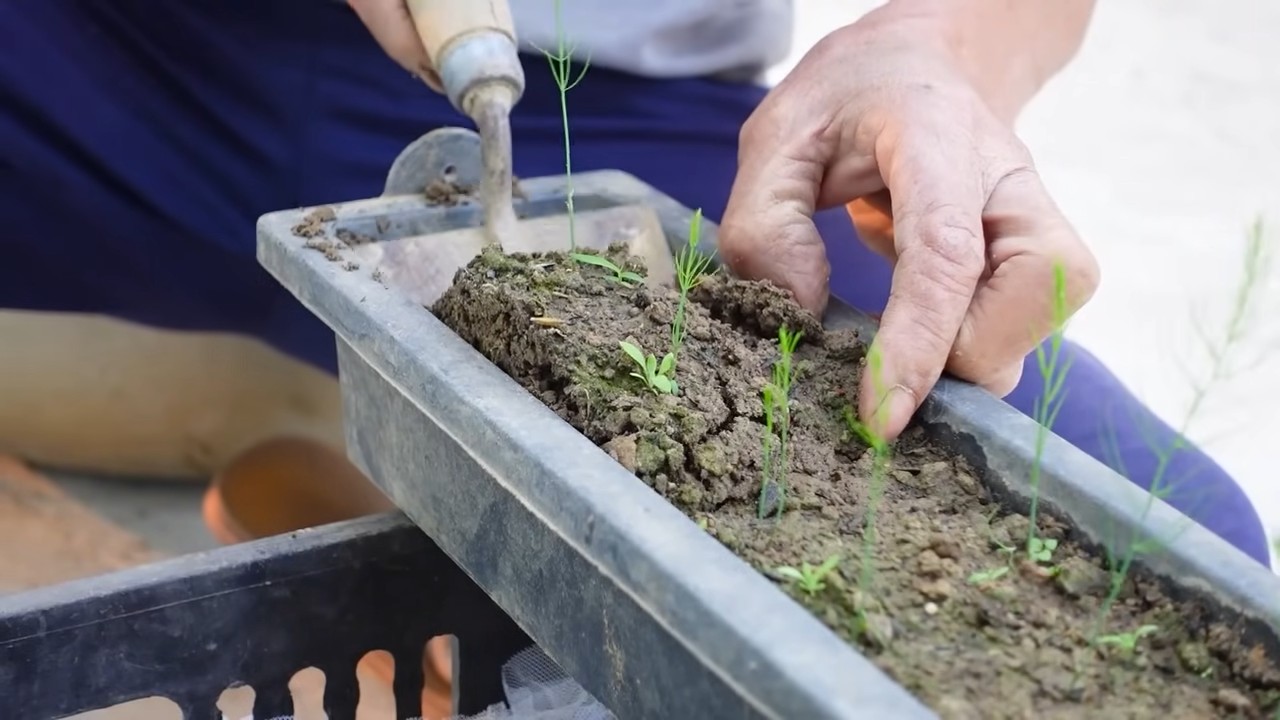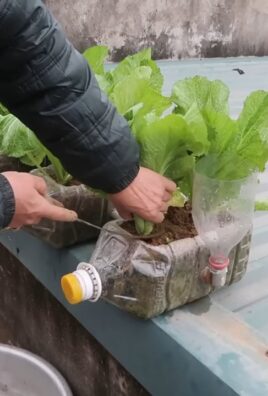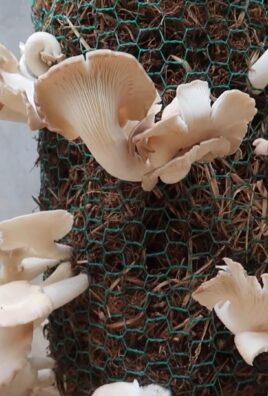Year Round Asparagus Growing might seem like a pipe dream, especially if you live somewhere with harsh winters. But guess what? It’s totally achievable with a few clever tricks and a little DIY spirit! For centuries, asparagus has been prized for its delicate flavor and nutritional benefits, gracing the tables of emperors and commoners alike. From ancient Rome, where it was considered a delicacy, to modern-day gardens, this perennial vegetable has captured our culinary hearts.
But let’s be honest, waiting all year for that fleeting spring harvest can be a real test of patience. That’s where this DIY guide comes in! I’m going to share some simple, yet effective, methods to extend your asparagus season and even enjoy fresh spears throughout the year. Imagine serving up homegrown asparagus in the middle of winter – your friends and family will be amazed!
This isn’t just about bragging rights, though. Learning how to achieve year round asparagus growing means you’ll have access to fresh, healthy produce whenever you want it, reducing your reliance on store-bought vegetables and saving money in the long run. Plus, there’s nothing quite as satisfying as nurturing your own food from seed to table. So, grab your gardening gloves, and let’s get started on this exciting journey to asparagus abundance!

Growing Asparagus Year-Round: A DIY Guide
Okay, let’s dive into the wonderful world of year-round asparagus growing! It might sound ambitious, especially if you live in a climate with harsh winters, but with a little planning and some DIY ingenuity, you can enjoy fresh asparagus spears almost any time of the year. This guide will walk you through the process, focusing on creating a controlled environment to extend your asparagus season.
Choosing the Right Asparagus Variety
Before we get started, it’s crucial to select the right asparagus variety. Some varieties are better suited for forcing (growing out of season) than others.
* ‘Jersey Knight’: This is a popular and reliable choice, known for its high yields and disease resistance. It’s a good all-around performer.
* ‘Jersey Giant’: Similar to ‘Jersey Knight,’ but slightly larger spears.
* ‘Purple Passion’: A unique variety with beautiful purple spears that turn green when cooked. It’s also sweeter than green varieties.
* ‘Mary Washington’: An older heirloom variety that’s still a solid choice, especially if you’re looking for something tried and true.
I recommend choosing a variety that’s known to perform well in your local climate, even for your regular outdoor asparagus patch. This will give you a head start when you’re forcing it indoors.
Preparing Your Asparagus Crowns
The key to year-round asparagus is having established crowns ready to force. You can’t just plant seeds and expect to harvest spears in a few weeks. Asparagus needs time to mature.
* Starting from Seed (Long-Term): If you’re starting from seed, sow them indoors in early spring. Transplant the seedlings outdoors after the last frost. It will take 2-3 years before you can harvest any spears. This is a long-term investment, but it’s the most economical way to get started.
* Buying Crowns (Faster): The quickest way to get started is to buy 1- or 2-year-old asparagus crowns from a reputable nursery. These are dormant root systems that are ready to be planted.
Important Note: Whether you start from seed or buy crowns, you need to establish a healthy asparagus bed outdoors first. This is where your asparagus will grow and store energy for future forcing.
Establishing Your Outdoor Asparagus Bed
This is the foundation for your year-round asparagus growing. A well-prepared bed will ensure healthy crowns that are ready for forcing.
* Location: Choose a sunny location with well-drained soil. Asparagus needs at least 6-8 hours of sunlight per day.
* Soil Preparation: Asparagus prefers slightly acidic soil (pH 6.5-7.0). Amend the soil with plenty of compost and well-rotted manure. This will improve drainage and provide essential nutrients.
* Planting: Dig trenches about 6-8 inches deep and 12 inches wide. Space the crowns about 12-18 inches apart in the trench. Cover the crowns with about 2 inches of soil. As the spears emerge, gradually fill in the trench with soil until it’s level with the surrounding ground.
* Watering and Fertilizing: Water regularly, especially during dry periods. Fertilize in early spring with a balanced fertilizer.
* Weed Control: Keep the asparagus bed free of weeds. Weeds compete with the asparagus for nutrients and water.
* Patience: Resist the urge to harvest spears during the first two years. This allows the crowns to establish a strong root system.
Forcing Asparagus Indoors: The Step-by-Step Guide
Now for the exciting part: forcing asparagus indoors! This is where we trick the asparagus into thinking it’s spring, even when it’s not.
Phase 1: Dormancy and Cold Treatment
This is crucial for breaking the asparagus’s natural dormancy.
1. Digging Up the Crowns: In late fall or early winter, after the foliage has died back, carefully dig up your asparagus crowns. Choose crowns that are at least 3 years old and have a good root system. I usually select the most mature crowns for forcing, leaving the younger ones to continue growing outdoors.
2. Cleaning the Crowns: Gently remove any excess soil from the crowns. Be careful not to damage the roots.
3. Cold Storage: Place the crowns in a large plastic bag or container filled with slightly moist peat moss or sawdust. Store them in a cool, dark place where the temperature stays between 32-50°F (0-10°C) for at least 8-10 weeks. A refrigerator, unheated garage, or root cellar works well. This cold treatment is essential for breaking dormancy and stimulating spear production. Make sure the peat moss or sawdust stays slightly moist, but not soggy. Check on the crowns periodically to ensure they’re not drying out or rotting.
Phase 2: Planting and Forcing
Now we’re ready to bring the asparagus indoors and encourage it to grow.
1. Choosing a Container: Select a large, deep container with drainage holes. A plastic tub, large pot, or even a repurposed container will work. The container should be at least 12 inches deep and wide enough to accommodate the number of crowns you’re forcing.
2. Preparing the Potting Mix: Use a well-draining potting mix. A mixture of compost, peat moss, and perlite works well. I like to add a slow-release fertilizer to the potting mix to provide nutrients for the asparagus.
3. Planting the Crowns: Fill the container with potting mix, leaving about 2 inches of space at the top. Plant the asparagus crowns close together, but not overcrowded. The crowns should be just below the surface of the potting mix.
4. Watering: Water the potting mix thoroughly after planting. Keep the potting mix consistently moist, but not soggy.
5. Providing Light and Warmth: Place the container in a warm, bright location. Asparagus needs plenty of light to produce spears. A sunny windowsill or a grow light will work. The ideal temperature for forcing asparagus is between 65-75°F (18-24°C).
6. Waiting for Spears: It will take a few weeks for the asparagus spears to emerge. Be patient! Once the spears start to appear, they will grow quickly.
7. Harvesting: Harvest the spears when they are about 6-8 inches tall. Cut them off at the base with a sharp knife.
Phase 3: Post-Forcing Care
What happens after you’ve harvested your indoor asparagus?
1. Resting the Crowns: After you’ve harvested spears for a few weeks, the crowns will need a rest. Gradually reduce watering and allow the foliage to die back.
2. Replanting Outdoors (Optional): You can replant the crowns outdoors in the spring, but keep in mind that they will be weakened from the forcing process. It’s best to keep them separate from your main asparagus bed and give them extra care. I usually discard the forced crowns and use fresh crowns for each forcing season. This ensures the best quality spears.
3. Starting Again: Repeat the process with fresh crowns in the fall or winter to enjoy year-round asparagus.
Troubleshooting
Even with the best planning, you might encounter some challenges. Here are a few common problems and how to address them:
* Spears are Thin and Weak: This could be due to insufficient light, warmth, or nutrients. Make sure your asparagus is getting enough light and warmth, and fertilize regularly.
* Crowns are Rotting: This is usually caused by overwatering. Make sure the potting mix is well-draining and avoid overwatering.
* No Spears are Emerging: This could be due to insufficient cold treatment. Make sure the crowns have been exposed to cold temperatures for at least 8-10 weeks. It could also be that the crowns are too old or weak.
Tips for Success
Here are a few extra tips to help you succeed with year-round asparagus growing:
* Use a Heat Mat: A heat mat can help to warm the soil and encourage spear production.
* Provide Humidity: Asparagus prefers humid conditions. You can increase humidity by misting the foliage regularly or placing a tray of water near the container.
* Rotate Your Crops: If you’re forcing asparagus regularly, rotate your crops to prevent soil depletion.
* Don’t Over-Harvest: Avoid over-harvesting the spears, as this can weaken the crowns.
Enjoying Your Homegrown Asparagus
There’s nothing quite like the taste of fresh, homegrown asparagus. Whether you steam it, grill it, or roast it, enjoy the fruits (or rather, spears) of your labor! I love to simply sauté it with a little olive oil, garlic, and lemon juice.
Growing asparagus year-round takes some effort, but it’s definitely worth it. With a little planning and some

Conclusion
So, there you have it! Mastering year-round asparagus growing isn’t just a pipe dream; it’s an achievable reality with a little planning and the right techniques. We’ve explored the secrets to extending your asparagus harvest far beyond the typical spring season, from selecting the right varieties and providing optimal growing conditions to employing clever strategies like succession planting and utilizing protective structures.
Why is this DIY trick a must-try? Because fresh, homegrown asparagus is a culinary delight that elevates any meal. Imagine the satisfaction of harvesting tender spears in the dead of winter, a vibrant green reminder of spring’s bounty amidst the cold. Beyond the taste, growing your own asparagus offers unparalleled control over the quality and freshness of your produce. You’ll know exactly what went into your food, avoiding the pesticides and long-distance transportation associated with store-bought asparagus. Plus, asparagus is a nutritional powerhouse, packed with vitamins, minerals, and antioxidants, making it a healthy and delicious addition to your diet.
But the benefits don’t stop there. Year-round asparagus growing is a rewarding and engaging hobby that connects you with nature and provides a sense of accomplishment. It’s a chance to learn about plant life cycles, experiment with different growing techniques, and develop a deeper appreciation for the food you eat.
Looking for variations? Consider experimenting with different asparagus varieties known for their cold hardiness or heat tolerance, depending on your climate. You could also explore different protective structures, such as cold frames, hoop houses, or even a dedicated greenhouse, to further extend your growing season. Another exciting avenue is hydroponic asparagus growing, which allows you to cultivate asparagus indoors year-round, regardless of the weather outside.
Don’t be afraid to get creative and adapt these techniques to your specific needs and preferences. The key is to understand the fundamental principles of asparagus growth and then tailor your approach accordingly.
We wholeheartedly encourage you to embark on this exciting journey of year-round asparagus growing. It may seem daunting at first, but with a little patience and perseverance, you’ll be rewarded with a continuous supply of fresh, delicious asparagus throughout the year.
We’re confident that you’ll find this DIY trick to be a game-changer for your garden and your kitchen. So, grab your gardening gloves, gather your supplies, and get ready to experience the joy of harvesting your own asparagus, no matter the season.
And most importantly, we want to hear about your experiences! Share your successes, your challenges, and your creative adaptations in the comments below. Let’s build a community of year-round asparagus growers and learn from each other’s experiences. Together, we can unlock the secrets to a continuous asparagus harvest and enjoy the unparalleled taste of homegrown goodness all year long.
Frequently Asked Questions (FAQ)
What are the best asparagus varieties for year-round growing?
Choosing the right asparagus variety is crucial for success in year-round growing. While most asparagus varieties are relatively adaptable, some are better suited for specific climates and growing conditions. For colder climates, consider varieties like ‘Jersey Knight,’ ‘Jersey Giant,’ or ‘Millennium,’ which are known for their cold hardiness and ability to withstand freezing temperatures. These varieties are also relatively early producers, allowing you to get a head start on the spring harvest.
For warmer climates, varieties like ‘UC 157’ or ‘Apollo’ are good choices, as they are more tolerant of heat and can continue to produce even during the summer months. However, even heat-tolerant varieties may benefit from some shade during the hottest part of the day.
Ultimately, the best variety for you will depend on your specific climate and growing conditions. It’s always a good idea to consult with local nurseries or gardening experts to get recommendations for varieties that are well-suited to your area.
How do I protect my asparagus plants from frost and cold weather?
Protecting your asparagus plants from frost and cold weather is essential for extending your growing season into the fall and winter. There are several strategies you can use to provide adequate protection:
* **Mulching:** Applying a thick layer of mulch around your asparagus plants can help insulate the soil and protect the roots from freezing temperatures. Use organic materials like straw, hay, or shredded leaves for best results.
* **Cold Frames:** Cold frames are simple, unheated structures that can provide a sheltered environment for your asparagus plants. They can be easily constructed from wood, plastic, or even repurposed materials like old windows.
* **Hoop Houses:** Hoop houses are larger, semi-permanent structures that provide more extensive protection from the elements. They are typically made from PVC pipes or metal hoops covered with plastic sheeting.
* **Row Covers:** Row covers are lightweight fab
So, there you have it! Mastering year-round asparagus growing isn’t just a pipe dream; it’s an achievable reality with a little planning and the right techniques. We’ve explored the secrets to extending your asparagus harvest far beyond the typical spring season, from selecting the right varieties and providing optimal growing conditions to employing clever strategies like succession planting and utilizing protective structures.
Why is this DIY trick a must-try? Because fresh, homegrown asparagus is a culinary delight that elevates any meal. Imagine the satisfaction of harvesting tender spears in the dead of winter, a vibrant green reminder of spring’s bounty amidst the cold. Beyond the taste, growing your own asparagus offers unparalleled control over the quality and freshness of your produce. You’ll know exactly what went into your food, avoiding the pesticides and long-distance transportation associated with store-bought asparagus. Plus, asparagus is a nutritional powerhouse, packed with vitamins, minerals, and antioxidants, making it a healthy and delicious addition to your diet.
But the benefits don’t stop there. Year-round asparagus growing is a rewarding and engaging hobby that connects you with nature and provides a sense of accomplishment. It’s a chance to learn about plant life cycles, experiment with different growing techniques, and develop a deeper appreciation for the food you eat.
Looking for variations? Consider experimenting with different asparagus varieties known for their cold hardiness or heat tolerance, depending on your climate. You could also explore different protective structures, such as cold frames, hoop houses, or even a dedicated greenhouse, to further extend your growing season. Another exciting avenue is hydroponic asparagus growing, which allows you to cultivate asparagus indoors year-round, regardless of the weather outside.
Don’t be afraid to get creative and adapt these techniques to your specific needs and preferences. The key is to understand the fundamental principles of asparagus growth and then tailor your approach accordingly.
We wholeheartedly encourage you to embark on this exciting journey of year-round asparagus growing. It may seem daunting at first, but with a little patience and perseverance, you’ll be rewarded with a continuous supply of fresh, delicious asparagus throughout the year.
We’re confident that you’ll find this DIY trick to be a game-changer for your garden and your kitchen. So, grab your gardening gloves, gather your supplies, and get ready to experience the joy of harvesting your own asparagus, no matter the season.
And most importantly, we want to hear about your experiences! Share your successes, your challenges, and your creative adaptations in the comments below. Let’s build a community of year-round asparagus growers and learn from each other’s experiences. Together, we can unlock the secrets to a continuous asparagus harvest and enjoy the unparalleled taste of homegrown goodness all year long.
Frequently Asked Questions (FAQ)
What are the best asparagus varieties for year-round growing?
Choosing the right asparagus variety is crucial for success in year-round growing. While most asparagus varieties are relatively adaptable, some are better suited for specific climates and growing conditions. For colder climates, consider varieties like ‘Jersey Knight,’ ‘Jersey Giant,’ or ‘Millennium,’ which are known for their cold hardiness and ability to withstand freezing temperatures. These varieties are also relatively early producers, allowing you to get a head start on the spring harvest.
For warmer climates, varieties like ‘UC 157’ or ‘Apollo’ are good choices, as they are more tolerant of heat and can continue to produce even during the summer months. However, even heat-tolerant varieties may benefit from some shade during the hottest part of the day.
Ultimately, the best variety for you will depend on your specific climate and growing conditions. It’s always a good idea to consult with local nurseries or gardening experts to get recommendations for varieties that are well-suited to your area.
How do I protect my asparagus plants from frost and cold weather?
Protecting your asparagus plants from frost and cold weather is essential for extending your growing season into the fall and winter. There are several strategies you can use to provide adequate protection:
* **Mulching:** Applying a thick layer of mulch around your asparagus plants can help insulate the soil and protect the roots from freezing temperatures. Use organic materials like straw, hay, or shredded leaves for best results.
* **Cold Frames:** Cold frames are simple, unheated structures that can provide a sheltered environment for your asparagus plants. They can be easily constructed from wood, plastic, or even repurposed materials like old windows.
* **Hoop Houses:** Hoop houses are larger, semi-permanent structures that provide more extensive protection from the elements. They are typically made from PVC pipes or metal hoops covered with plastic sheeting.
* **Row Covers:** Row covers are lightweight fabrics that can be draped over your asparagus plants to provide a layer of insulation. They are easy to install and remove, making them a convenient option for short-term frost protection.
* **Greenhouses:** For the ultimate in year-round protection, consider growing your asparagus in a greenhouse. Greenhouses provide a controlled environment that allows you to regulate temperature, humidity, and light levels.
How often should I water my asparagus plants?
Asparagus plants need consistent moisture, especially during the growing season. However, overwatering can lead to root rot, so it’s important to strike a balance. As a general rule, water your asparagus plants deeply whenever the top inch of soil feels dry to the touch. The frequency of watering will depend on your climate, soil type, and the age of your plants.
During hot, dry weather, you may need to water your asparagus plants every day or every other day. In cooler, wetter weather, you may only need to water them once a week or even less frequently.
It’s always best to check the soil moisture before watering to avoid overwatering. You can use a moisture meter or simply stick your finger into the soil to check for dryness.
How do I fertilize my asparagus plants?
Asparagus plants are heavy feeders and require regular fertilization to thrive. The best time to fertilize your asparagus plants is in the spring, before the spears begin to emerge, and again in the fall, after the foliage has died back.
Use a balanced fertilizer with a ratio of 10-10-10 or 10-20-20. You can also use organic fertilizers like compost, manure, or bone meal. Apply the fertilizer according to the package directions.
In addition to regular fertilization, you can also amend the soil with compost or other organic matter to improve its fertility and drainage.
How long does it take for asparagus plants to mature and produce a harvest?
Asparagus plants typically take two to three years to mature and produce a significant harvest. During the first year, focus on establishing a strong root system. Do not harvest any spears during the first year. In the second year, you can harvest a few spears, but limit the harvest to a few weeks. In the third year, you can harvest asparagus for a longer period, typically six to eight weeks.
Once your asparagus plants are fully mature, they can continue to produce for 15 to 20 years or even longer.
Can I grow asparagus in containers?
Yes, you can grow asparagus in containers, but it requires some extra care. Choose a large container that is at least 12 inches deep and wide. Use a well-draining potting mix and fertilize regularly. Container-grown asparagus plants may need to be watered more frequently than those grown in the ground.
What are some common pests and diseases that affect asparagus plants?
Asparagus beetles are a common pest that can damage asparagus spears and foliage. Other pests include aphids, spider mites, and cutworms. Common diseases include asparagus rust, fusarium crown and root rot, and purple spot.
To prevent pests and diseases, practice good garden hygiene, such as removing weeds and debris, and providing adequate air circulation. You can also use organic pest control methods like insecticidal soap or neem oil.
How do I know when to harvest asparagus spears?
Harvest asparagus spears when they are 6 to 8 inches tall and about as thick as your finger. Cut the spears at ground level with a sharp knife. Harvest asparagus spears every day or every other day during the peak of the season.
What do I do with my asparagus plants in the fall?
In the fall, after the foliage has died back, cut the stems to ground level. Remove any weeds or debris from around the plants. Apply a layer of mulch to protect the roots from freezing temperatures. Fertilize the plants with a balanced fertilizer or compost.
Is year-round asparagus growing really worth the effort?
Absolutely! While it requires some initial investment and ongoing effort, the reward of having fresh, homegrown asparagus throughout the year is well worth it. The taste and quality of homegrown asparagus are far superior to store-bought asparagus, and you’ll have the satisfaction of knowing exactly where your food came from. Plus, year-round asparagus growing is a fun and rewarding hobby that can connect you with nature and provide a sense of accomplishment.




Leave a Comment